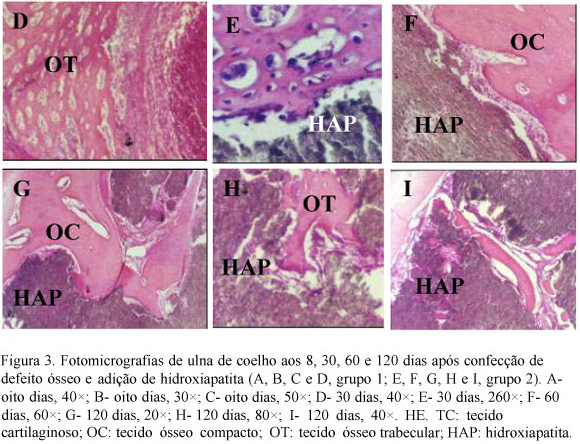Composites of synthetic hydroxyapatite and carbon (HAC) and synthetic hydroxyapatite, carbon and sodium biacid phosphate (HACF), both of them in solid form, as substitute in bone regeneration were studied. Thirty-six rabbits divided in three groups were used. After routine anesthetic and surgical procedure, a bone fragment with two-centimeter in length was taken from the middle part of the left ulna. Animals from group 1 received one block of HAC and HACF, from group 2 received only HAC, in the criated bone defect, and animals from group 3 did not receive any treatment. They were submitted to clinical and radiographic examinations at 8, 15, 30, 60, 120 and 180 days after surgery to evaluate bone healing. At the same dates, two animals of each group were enthanised and bone fragments were collected for histological evaluations. The results showed normal evolution of bone regeneration in all groups but faster in animals that received the composites. The use of HAC and HACF showed to be efficient and biocompatible, and not caused rejection.
rabbit; biomaterial; hydroxyapatite; bone substitute






